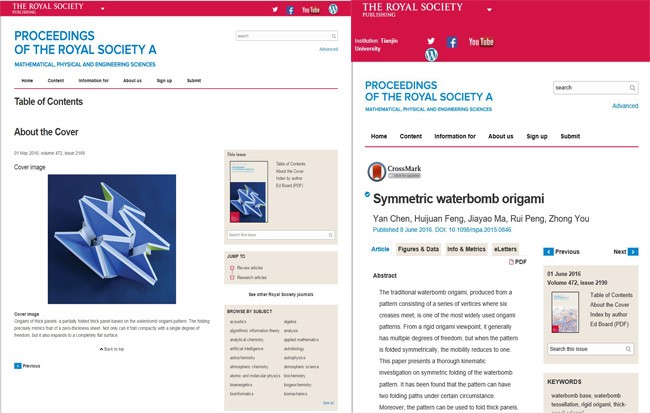Research
Team
Publications
News
|
Research on thick-panel waterbomb has been published on Proceedings of the Royal Society A as the journal cover paper
From: Date: 2016-06-11 Professor Yan Chen and her team published their research about symmetric waterbomb origami on Proceedings of the Royal Society A (RSPA) as the journal cover paper on June 8, 2016. RSPA is one of the leading journals in the world with a history of more than 350 years.
Link to the cover:
http://rspa.royalsocietypublishing.org/content/472/2189.cover-expansion
|
